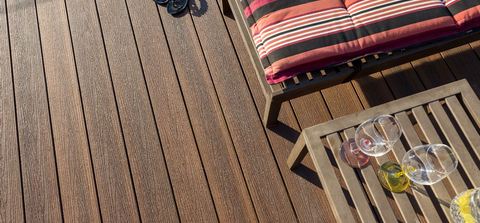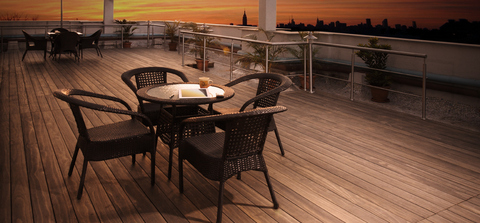At ITI Timspec, we offer a range of decking options, including traditional timbers and modern composite solutions. Suggestions and guidelines to choose the right decking for your project are below.

Lengths Available
Generally, decking is only sold on a mixed length 'random spread' specification, this means that if you order 100 lineal meters, you will get a range of lengths within the spread.
Certain species such as Kwila, Radiata, Western Red Cedar and Accoya have good length specifications, so you can expect a nice mix of short, medium and long lengths. Other timbers such as Jarrah and Vitex, have shorter lengths so, expect to encounter short lengths. This is generally not a problem as the installer would usually stagger the shortest lengths around the deck so, they are not too obvious.
Moisture Content
Timber is hygroscopic, so it will swell and shrink as it gains/lose moisture from the environment. The moisture content of the sub-frame must not exceed 20% at the time of fixing as problems may arise later resulting in excessive timber movement (shrinkage) if the framing is too wet. If you are ordering decking timber, make sure it has an appropriate moisture content (usually air dried is sufficient, but some timbers may need to be kiln dried).
Durability
The expected serviceable life span will depend on the timber specified. Refer to ITI Timspec installation manual for more information on durability of the various species we offer, or check out our EVA-Last Composite Decking.
Profile
Usually, decking is available with smooth face on both sides. A reeded one face is available on request (also known as grip tread) which has a smooth back.
Bleeding
Most timber will bleed, which is leeching of a coloured sap or tannin. For many timbers, the amount of bleeding is minimal and will have no effect. Please contact ITI Timspec for a suggestion on the minimum and maximum bleeding species.
Fixing
It is recommended that only decking screws are used for fixing decking to joists. This is preferable as timber naturally swells and shrinks, and may push up a smooth shanked nail. It is also recommended to pre-drill screw pilot holes.
Decking Installation Manual
The guide is to promote safe and sensible methodology for installing decking timbers. At ITI Timspec, we believe in trying to promote conservative and sensible options that mean the end result is a pleasing and long lasting one.
Download here: Find more information on decking in our installation manual

Eva-Last®'s range of composite building solutions offer you premium outdoor living through innovative, durable and eco-friendly products.

We offer a great range of Traditional Hardwood Decking, in a range of species to suit your style and environment.

Download ITI Timspec Decking Brochure
(Displays options, certifications and species)